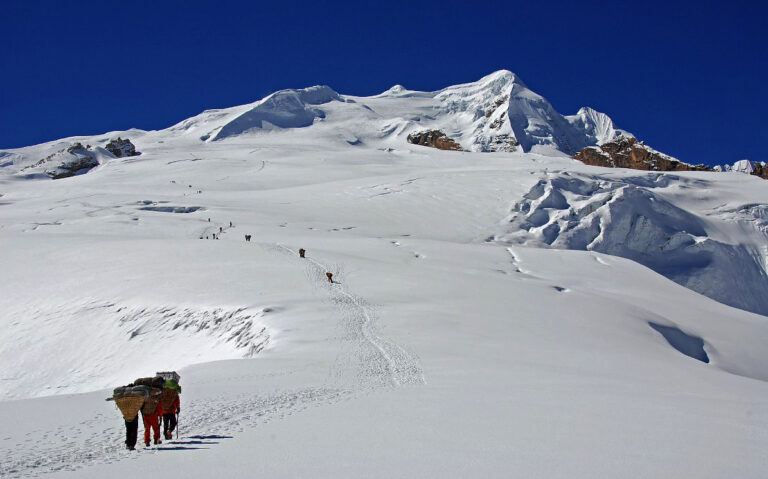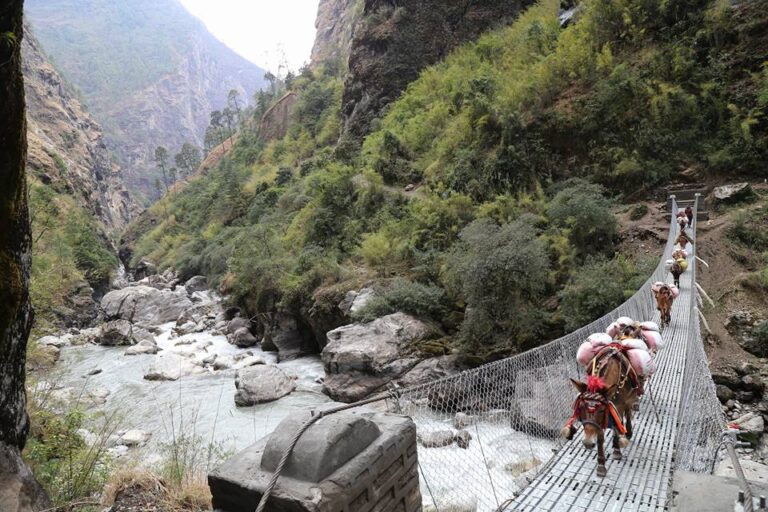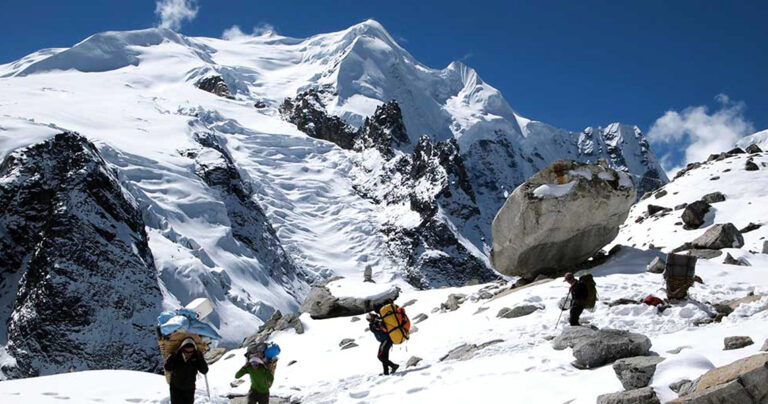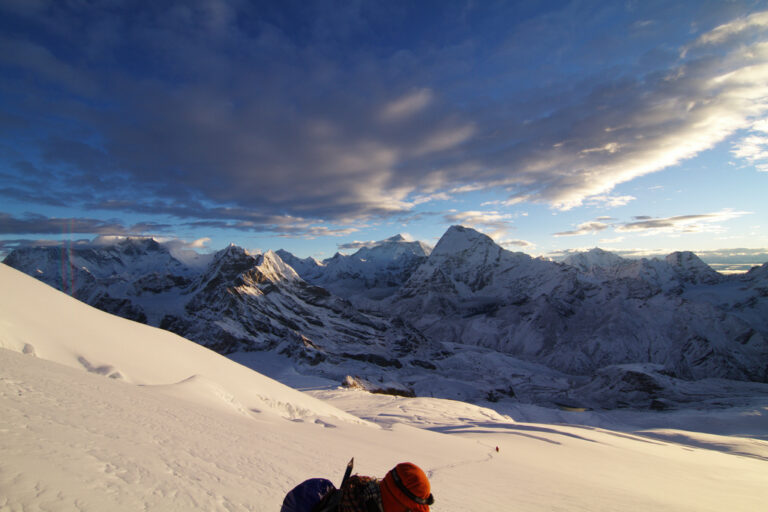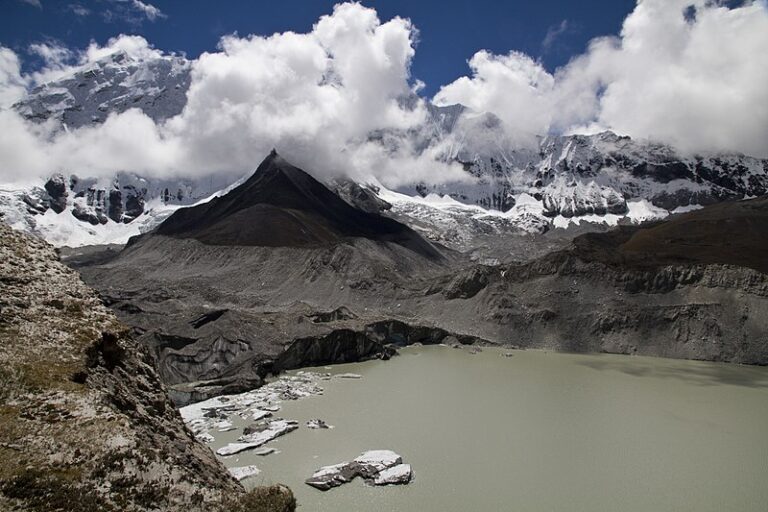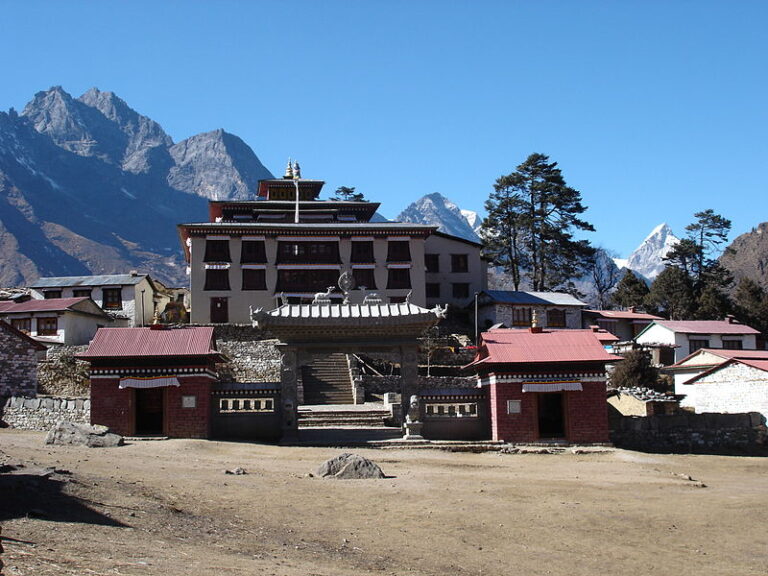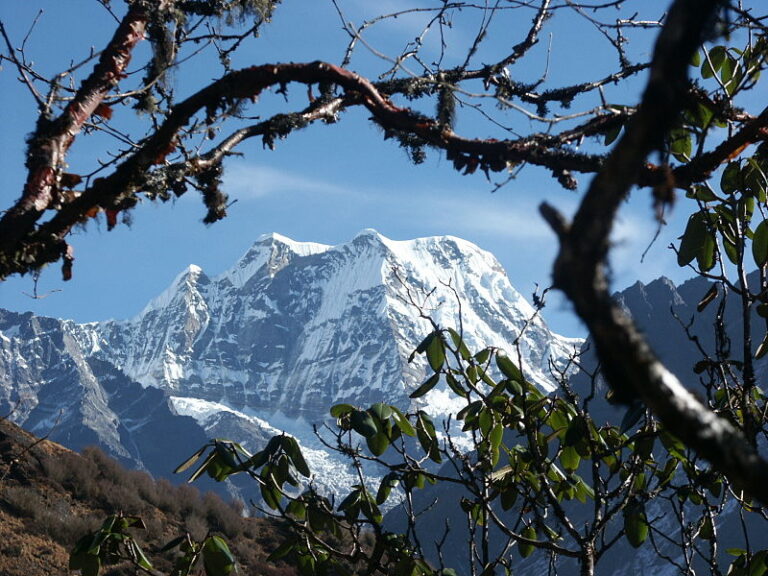Day 01 – Fly to Lukla and trek to Chhutanga (3450m.a.s.l) 5 to 6 hours walk – early in the morning we will fly for 25 minutes to get Lukla airport with the breathtaking view of high Himalayas. From Lukla we will head to Chhutanga through the lush forest of Rhododendron, Magnolia, and pine. 5 to 6 hours trek from Lukla to Chhutanga offer us to see a splendid view of kongde peak, beautiful Dudh Koshi river valley, and small Sherpa villages. We will set up our tent in Chhutanga to spend a Joyful night.
Day 02 – Trek to Chhitrala – we will head to Chhitrala pass by gigantic grassy land and rocky hills. Most of the time we will do several up and downhill trail to get Chhitrala. Chhitrala commands us to see a wonderful view of Khumbu valley and splendid view of Mount Makalu 8463 m and its beautiful ranges. We will set up our tent to spend another night in Chhitrala.
Day 03 – Trek to Tashing Dingma – Trek from Chhitrala to Tashing Dingma offers to see charm landscapes, river valleys, meadows, and some of the wildlife as monkeys, deer and many species of birds and butterflies. Along the day we will do several up and downhill trail crossing numerous small streams by the wooden bridges. An approximately, 6 hours steep and downhill trail brings us to Tashing Dingma where we will spend a joyful night with delicious meals and hot drinks.
Day 04 – Trek to Thangnak (4350m.a.s.l) – 6 hours walk – Some of the trekking map spelled Thangnak is as Tranag but still it is the same place where can be seen dozens of header’s hut. The major attraction of the day would be rocky hills, beautiful landscapes, river valleys, and gurgle sound of River. Most of the time we have to walk on the ascended trail and short downhill trail on a rocky path. We will set up our tent in Thangnak to get good rest after 6 hours walk.
Day 05 – Trek to Khahare (5000m.a.sl) – 5 to 6 hours walk – Khahare is also known as Mera peak base camp which is located an elevation with 5000 meters so can be seen high Himalayan view including fabulous landscapes and river valleys. Most of the time we will walk on the gradual up and gentle slope trail but still would be a little bit difficult to take a breath due to lack of oxygen at high altitude. We will set up our tent at Thangnak and spend a night with the good smell of Nature.
Day 06 – Acclimatization day – It is better to have good rest in Thangnak to safe energy due to walk on the glaciers, icy-trail and slippery trail by tomorrow morning but still requires an acclimatization too so we will climb up some the hills that offers to see snow-capped peaks, charm landscapes and gigantic grassy lands to southwards of Khahare.
Day 07 – Trek to Mera La 5400 meters – 7 hours walk – After breakfast we’ll ascend for an approximately 2 hours to get top of the moraine which is situated just below the Mera peak glacier. From here, we will ascend to the right glaciers of Mera peak to cross Mera La pass then an approximately 2 hours walk from the top of the Mera La appear a huge icy-plateau where we will set up our tent to spend a night. The plateau offers to see a close view of high Himalayas and glaciers.
Day 08 – Trek to Mera La advance camp (5800m.a.s.l) – 6 hours walk – a trek of the day would be really a bitter taste due to ascend approximately 6 hours to get Mera la advance base camp but still along the day we will see the magnificent view of numerous snow-capped peaks, glaciers and including some of the tallest mountains of the world called, Cho-Oyu, Lhotse, Makalu, Everest and as well as far view of Mount Kanchenjunga.
Day 09 – Summit of Mera peak and trek down to Rato Odar (Red cave) – we will have our lunch early in the morning and start to climb Center Mera peak which may take approximately 5 hours to get the top. Top the Mera peak commands to see thousands of snow-capped peaks including the view of Cho-Oyu, Makalu, Kanchenjunga, Lhotse, Mount Everest, and its awesome panoramas. After the summit of Mera peak we will trek down to Rato Odar which means Red cave where we will spend a night with a great celebration of our success.
Day 10 – Trek to Jor Pokhari (twins Lake) – 5 to 6 hours walk – approximately 5 hours ascend bring us to Hinku valley which is made by the three mountains called Thamseerku, Thamarteka and Kusum kangaroo so during the trek we will have a marvelous view of snow-capped peaks, meadows, glaciers and river valleys. Most of the time we will climb the uphill trail and short downhill trail on a rocky path so we have to be mentally and physically very careful. Jor Pokhari means twins lake which is really a beautiful place to set up a tent and very safe to spend a joyful night.
Day 11 – Trek to Kalo Pokhari (Black Lake) – 5 hours walk – we will head to Kalo Pokhari doing by mostly uphill and short downhill trail to get destination of the day. An approximately 4 to 5 hours walk from Jor Pokhari brings us to a beautiful place called Kalo Pokhari which means “The Black Lake” because there is can be seen a Lake which looks like full of black color. During the day, we will have a fascinating view of high Himalayas, view of Hinku valley with great green forest to the southwards, and gigantic grassy land.
Day 12 – Trek to Panch Pokhari (5400m.a.s.l) – 6 hours walk – The word Panch Pokhari means “The five Lakes” in Nepali language because at Panch Pokhari place can be seen five Lakes which are not so big but still very beautiful and pilgrimage sites for the Hindu people. The view and trail condition of the day won’t be different from the last day so most of the time we will walk on the steep hills and short downhill trails with the view of high mountains, glaciers, glacial lakes and alpine meadows.
Day 13 – Trek to Chhukung valley (3867m.a.s.l) – 7 to 8 hours – we will start our trek earlier than previous days due to cross over the Amphulapcha pass and long descend to get Chhukung valley. Begins of the morning we will ascend to the top of the Amphulapcha that offers to see the stunning view of Lhotse, Mount Everest, Nuptse, and summit of Mera peak. From the top of the Amphulapcha pass, the trail gently descends to the Chhukung valley stepping by thick snow; pass by crevasses and difficult downhill where we have to fix rope. Approximately 4 hours descend from the Amphulapcha pass we will be in Chhukung village where we will take guest house instead of a tent to celebrate on a successful summit of Mera peak and safe pass of Amphulapcha.
Day 14 – Trek to Tengboche (3860m.a.s.l) – 5 hours walk – from today we will start to return back to Lukla pass by Dingboche, Somare, and Pangboche village which are we left and passed just a couple of days ago. Mostly we will do gentle downhill to get Pangboche village with the view of some mountain views. From Pangboche village we will head to Tengboche village through the dense forest of rhododendron and pine trees. Tengboche village is located just top of the hill and offers us to visit more than 600 years old monastery called Tengboche Gompa.
Day 15 – Trek to Namche Bazaar (3440m.a.s.l) – 6 hours walk – the trail gently descend from the yard of the guest house to the Fungitanga village that may take an about two hours and we will climb an about one and half hours to get Kyanjuma village through the pine and Rhododendron forest with view of mountain vista and green hills. We will have our lunch in Kyanjuma village then two hours pleasant walk take us to Namche Bazaar.
Day 16 – Trek to Phakding village (2610m.a.s.l) – 5 hours walk – begin of the morning we will walk downhill trail an about one hour to get Larja Dobhan then rest of the trek to Phakding village is very pleasant to walk due to walk through the forest with the view of green landscape and vista stunning view of Thamserku peak.
Day 17 – Trek to Lukla bazaar 2840 meters – 5 hours walk – we will pass many Sherpa villages called Ghat, Thadokoshi, Chheplung, and Chaurikharka with the view of Kusum kangaroo and Kongde peak. Along the trail we will see many Chhortens, Stupa, monasteries, and Buddhist incantation, which are carved on the huge rocks of the center of the trail.
Day 18 – Fly back to Kathmandu – Early in the morning we will fly for 25 minutes to get Kathmandu valley. During the flight we will see magnificent view of high Himalayan ranges called Annapurna, Manaslu, Ganesh Himal, Langtang Himal, Manaslu and Dhaulagiri mountain ranges. After arriving in Kathmandu we will transfer to the Hotel.
